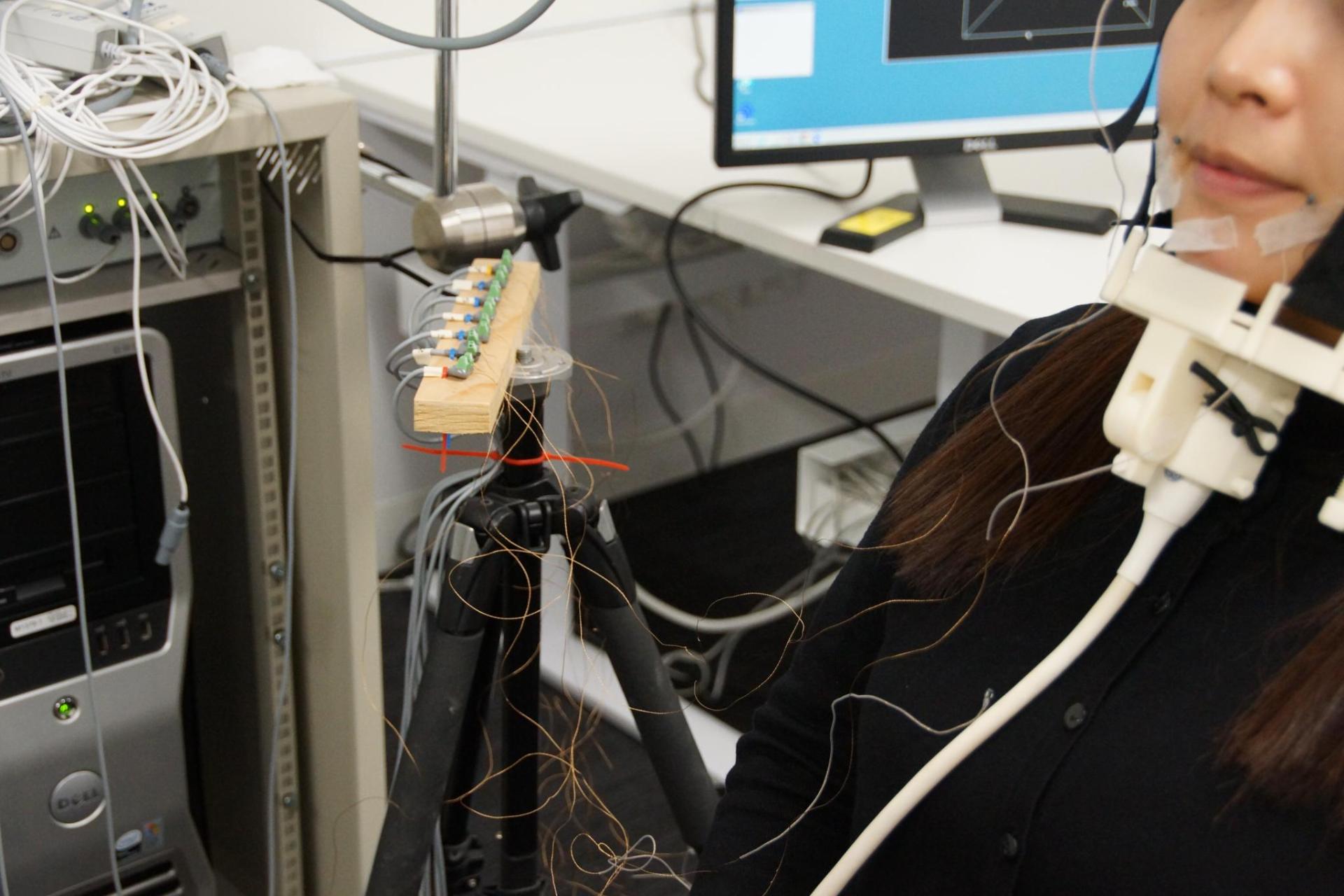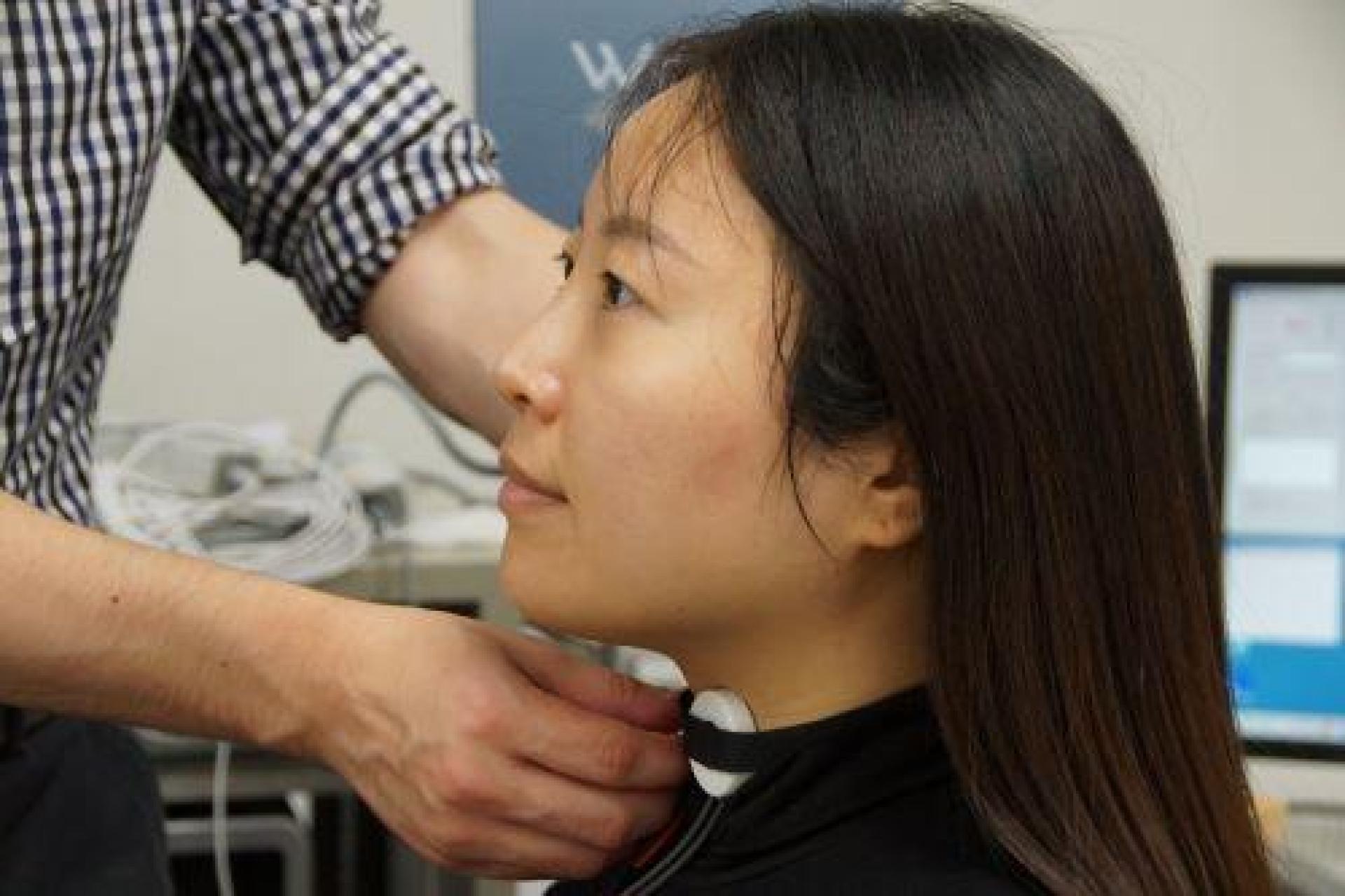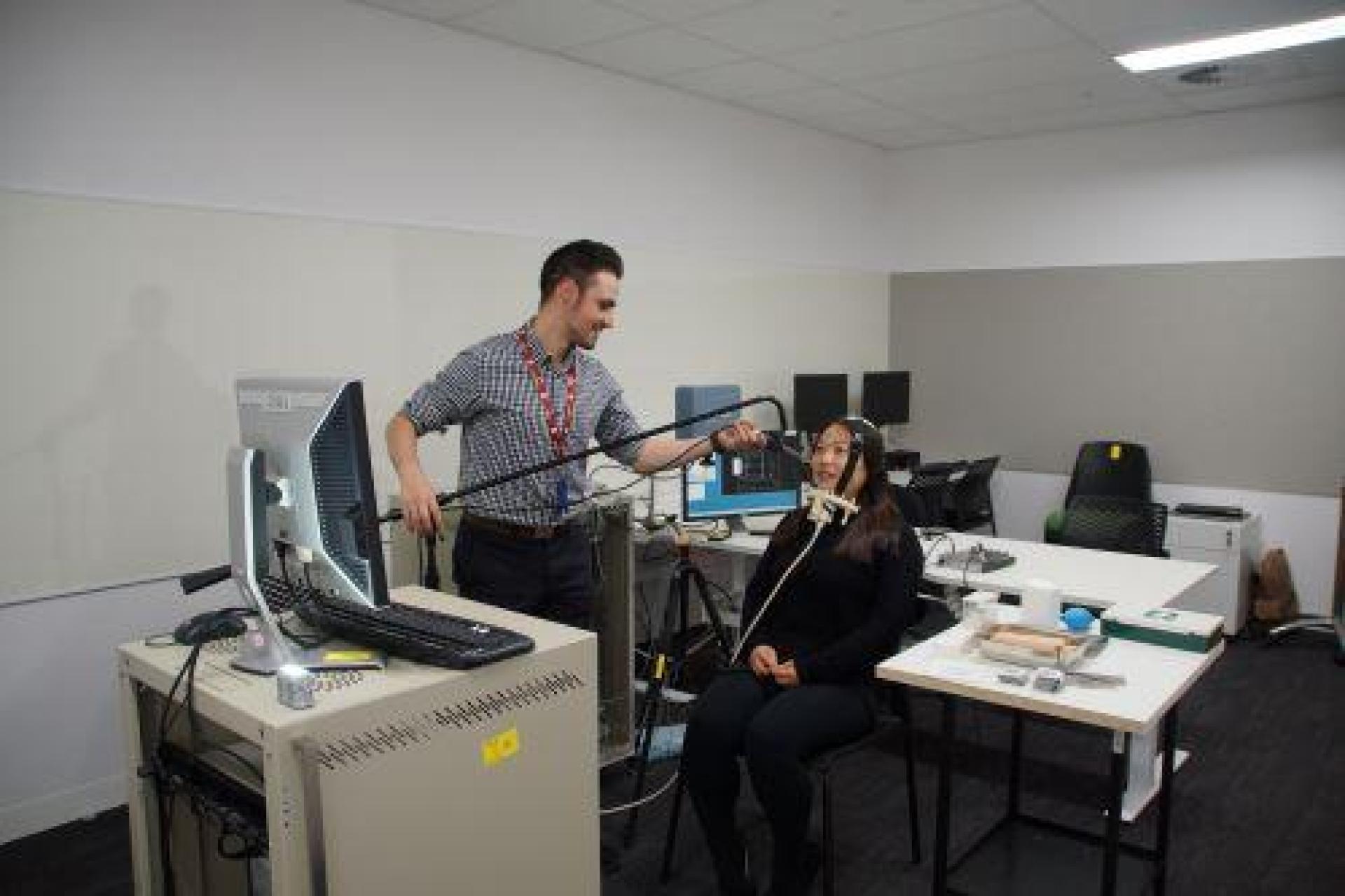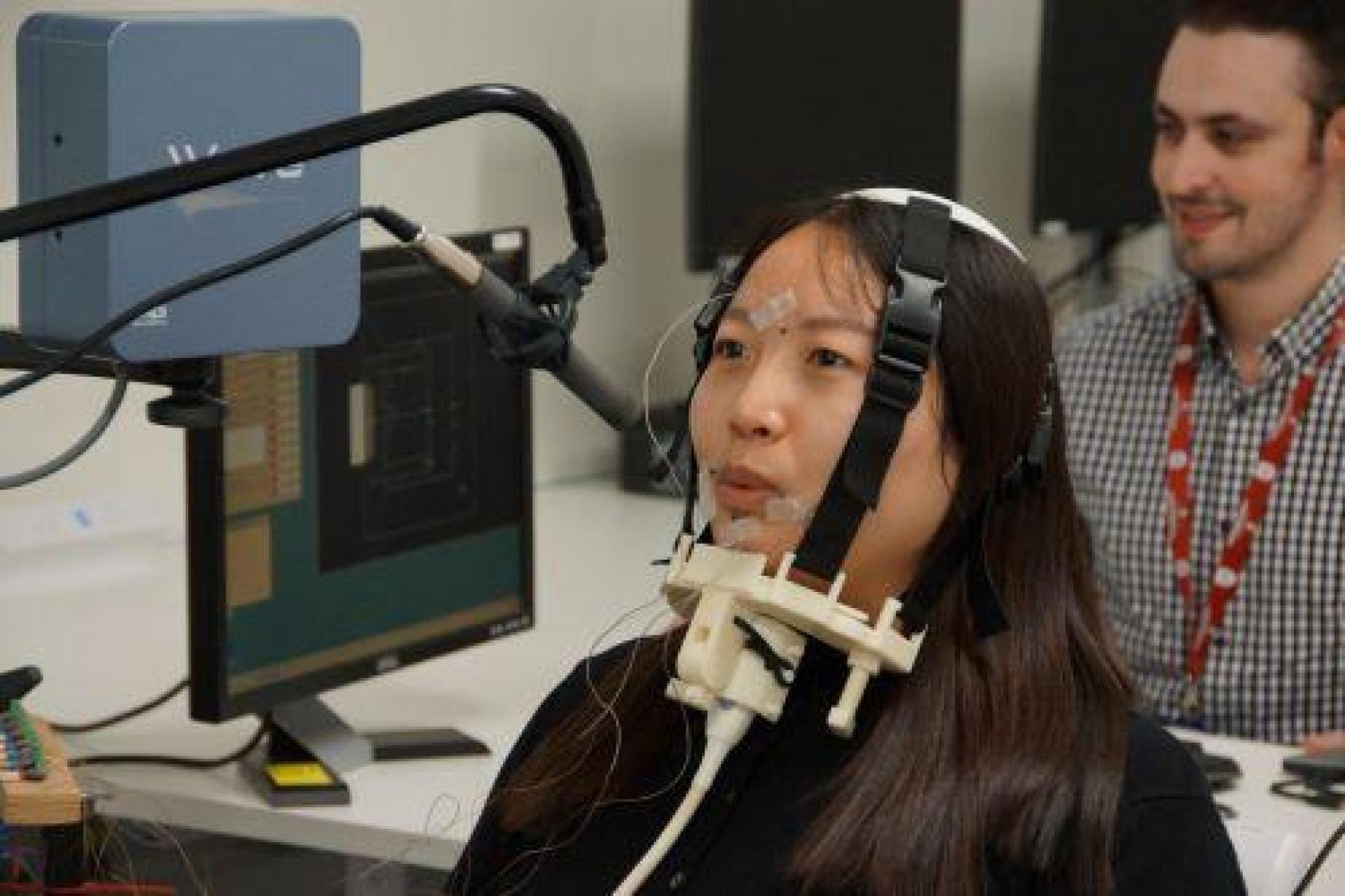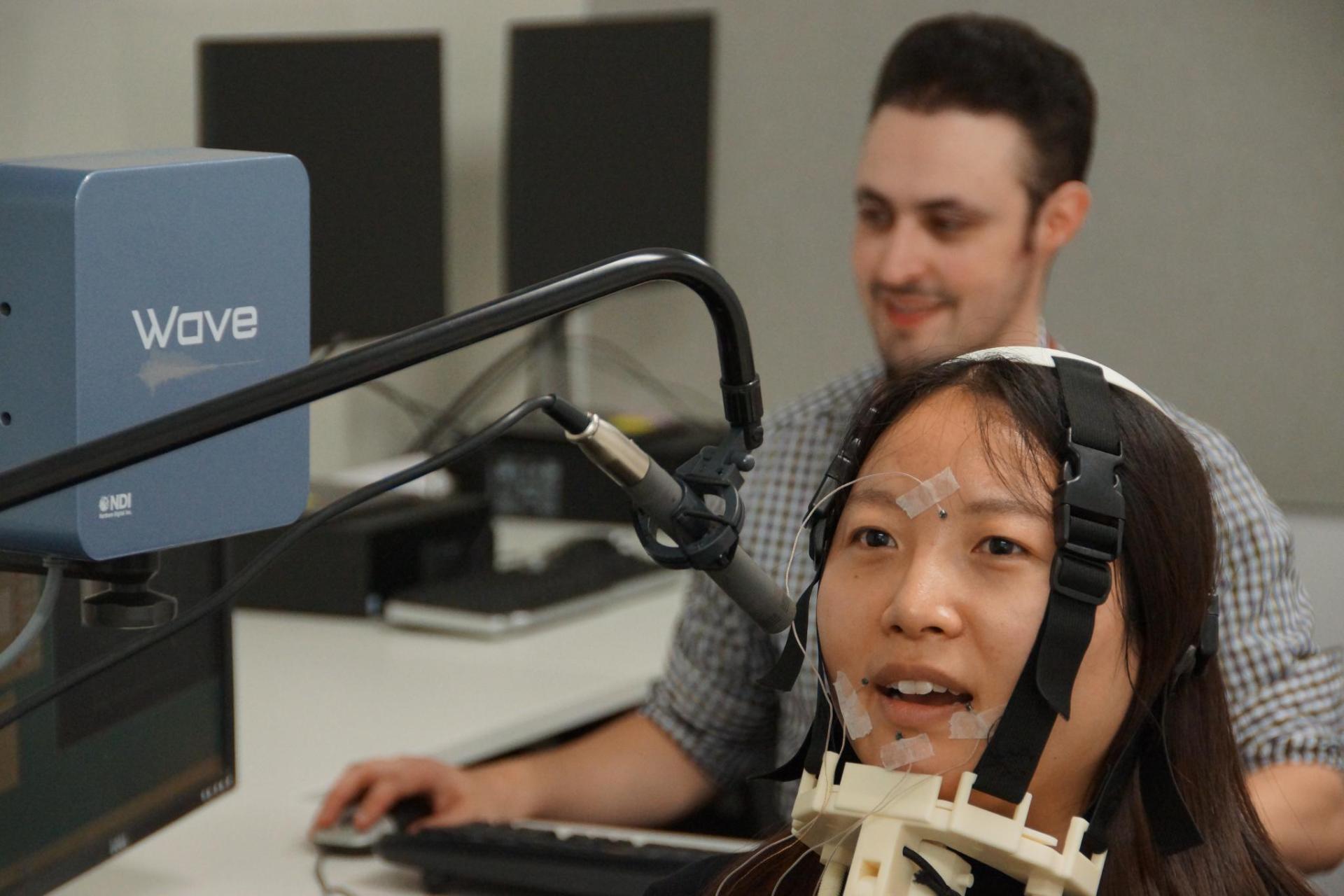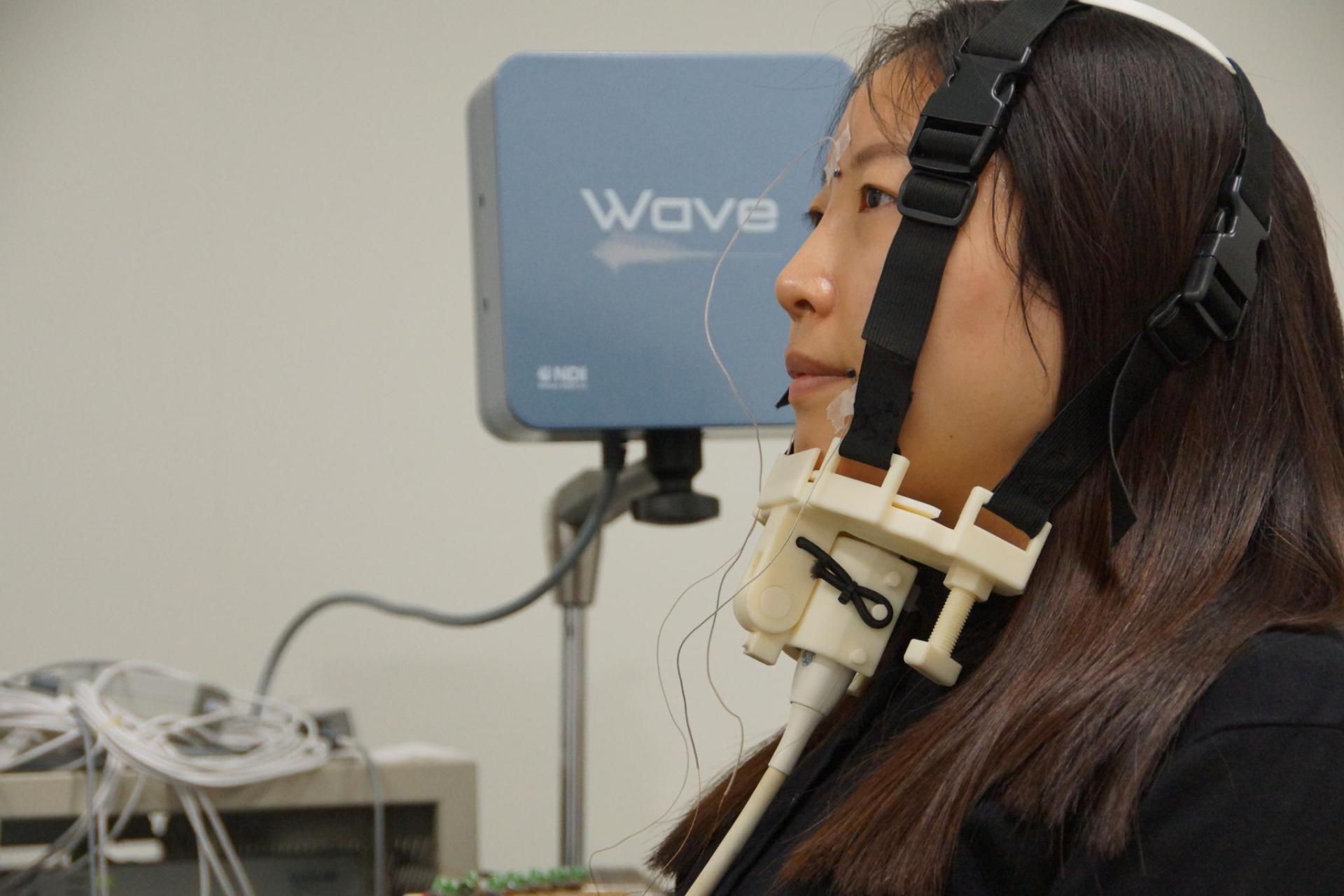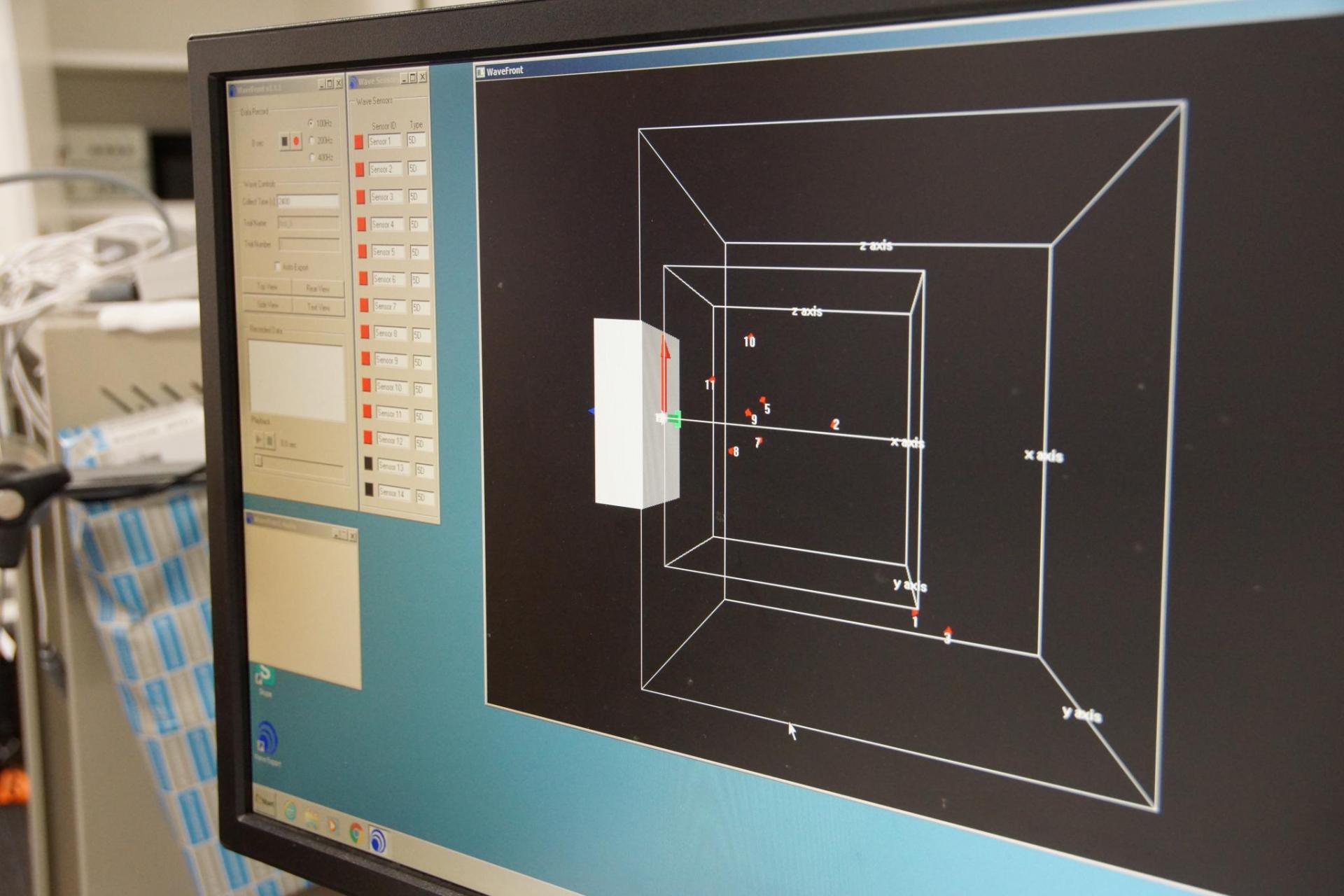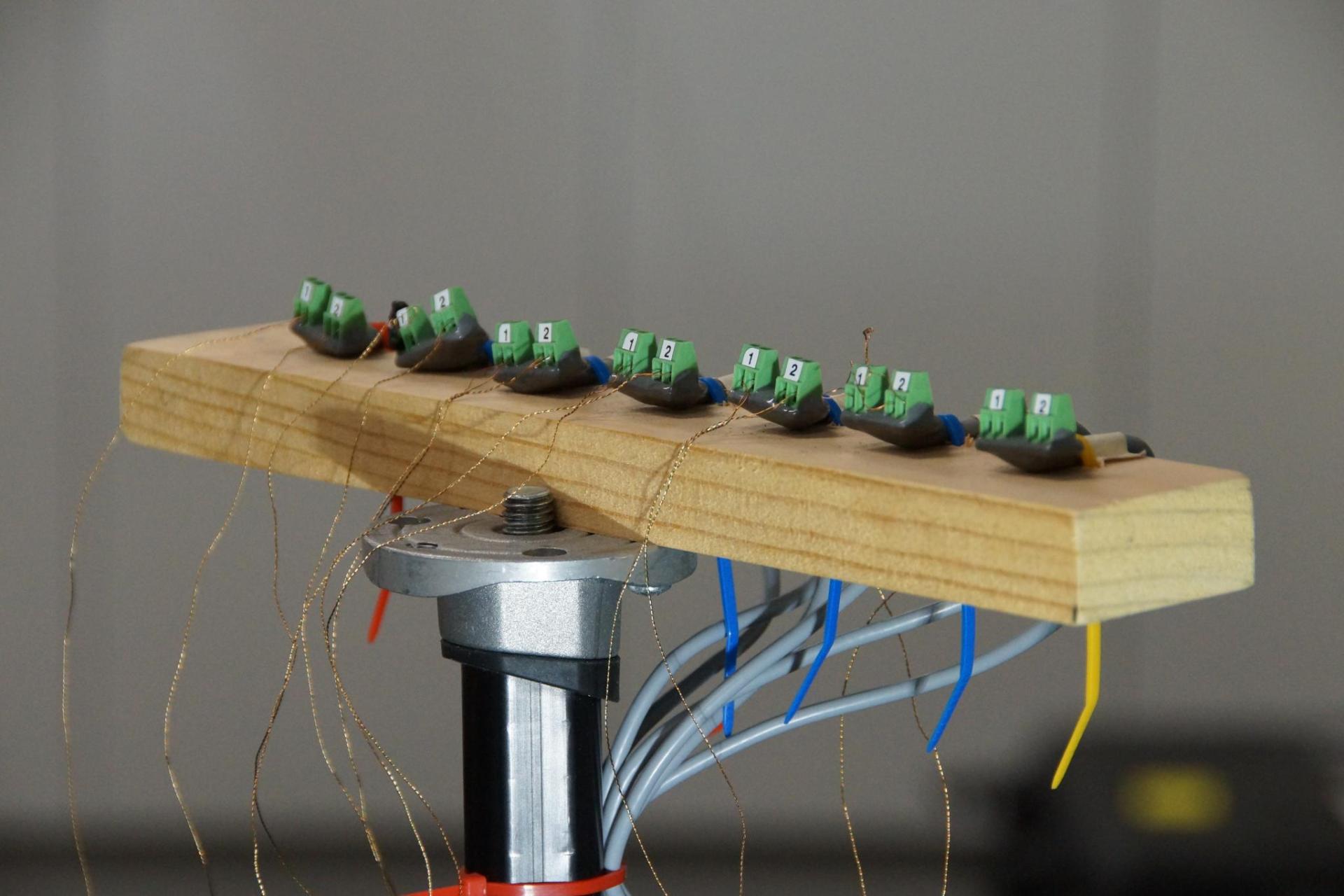Speech Production Lab
The production of speech, unlike its perception, is not fully functional at birth as it involves the complex temporal and spatial juxtaposition of various closing and opening gestures (movements) of the speech articulators: lips, tongue tip, tongue body, tongue root, velum (soft palate) and larynx (voice box). These complex coordinations are not fully mastered for fluent conversational speaking until a child is four or five years old. However, from birth infants begin to “exercise” the various articulators and components of the gestures that they will gradually coordinate those gestures to harness them for word production and eventually word combinations and sentences. In fact, already by about 6 months of age they have begun to coordinate some of those articulatory sufficiently well to begin babbling, which sounds to adults like repetitive or varied sequences of meaningless syllables.
The ambient speech environment assists in the acquisition of speech in the native language, but while this early process is seemingly easy, people who begin to learn a second language (L2) past puberty generally fail to master a nativelike accent in that L2, instead speaking with a foreign accent that is shaped by their own native language. Thus, the specificity of the complex articulatory control learnt early in life for speaking the native language constrains the speech patterns available for use in later-learned languages.
These issues, as well as the differences in speech patterning across regional accents of a given single language, can be studied in The MARCS Speech Production lab. The results of such articulatory studies help to elucidate the processes of articulatory control, their development in infants and later L2 learners, and how speech production is guided by the perception of speech – i.e., the perception-action loop -- which becomes attuned specifically to native language speech patterns during the first year of life.
Equipment includes the following.
NOTE that some of these devices are at times temporarily relocated outside of the lab, e.g., for field studies of speech production, or for use at other MARCS labs for other types of movement or physiological studies.
2 NDI Wave Electro-Magnetic Articulometry (EMA) systemsThis system generates a defined yet safe electro-magnetic field surrounding the participant’s head/shoulders, allowing the fine-grained temporal and 3-dimensional tracking of multiple wired micro-sensors that can be temporarily attached to the face, lips, gums and locations along the tongue. It is used to track tongue, lip and jaw gestures and their temporal and spatial coordination during speaking.
MicroUS EXT-1 Ultrasound systemThis is a PC-based, open-architecture, compact and lightweight Ultrasound diagnostic system, used in the Speech Production lab to track tongue or larynx movements during speech by secure placement of an ultrasound probe under the participant’s chin during their production of speech.
Portable ultrasound LogiQ eThis is a PC-based compact and portable Ultrasound diagnostic system, also used for tracking tongue and larynx movements during speech.
Electroglottograph two-channel systemTwo disk-shaped sensor pads are affixed by a wide elastic band to the ides of the neck, positioned on either side of the larynx to pick up and record the waveform and frequency of voice pulses from the larynx during speaking or singing.
Nasalance and oral airflow systemsThese systems measure nasal versus oral airflow during speaking. Nasalance systems are used to determine when the velum is open versus closed during speech; nasal airflow during velic opening results in nasal consonants such as M and N and in nasalised vowels (e.g., as used in French and Portuguese). Oral airflow tracking allows determination or when consonants are occuring that require full closure of the vocal articulators during speech, as for the consonants B, D, G, P, T and K.
Supporting equipment
The Speech production lab also holds several high-quality microphones, amplifiers, and multiple computer systems and monitors for recording high-quality audio during speech production experiments, and for monitoring, collecting and processing of the articulatory data for the experiments.
